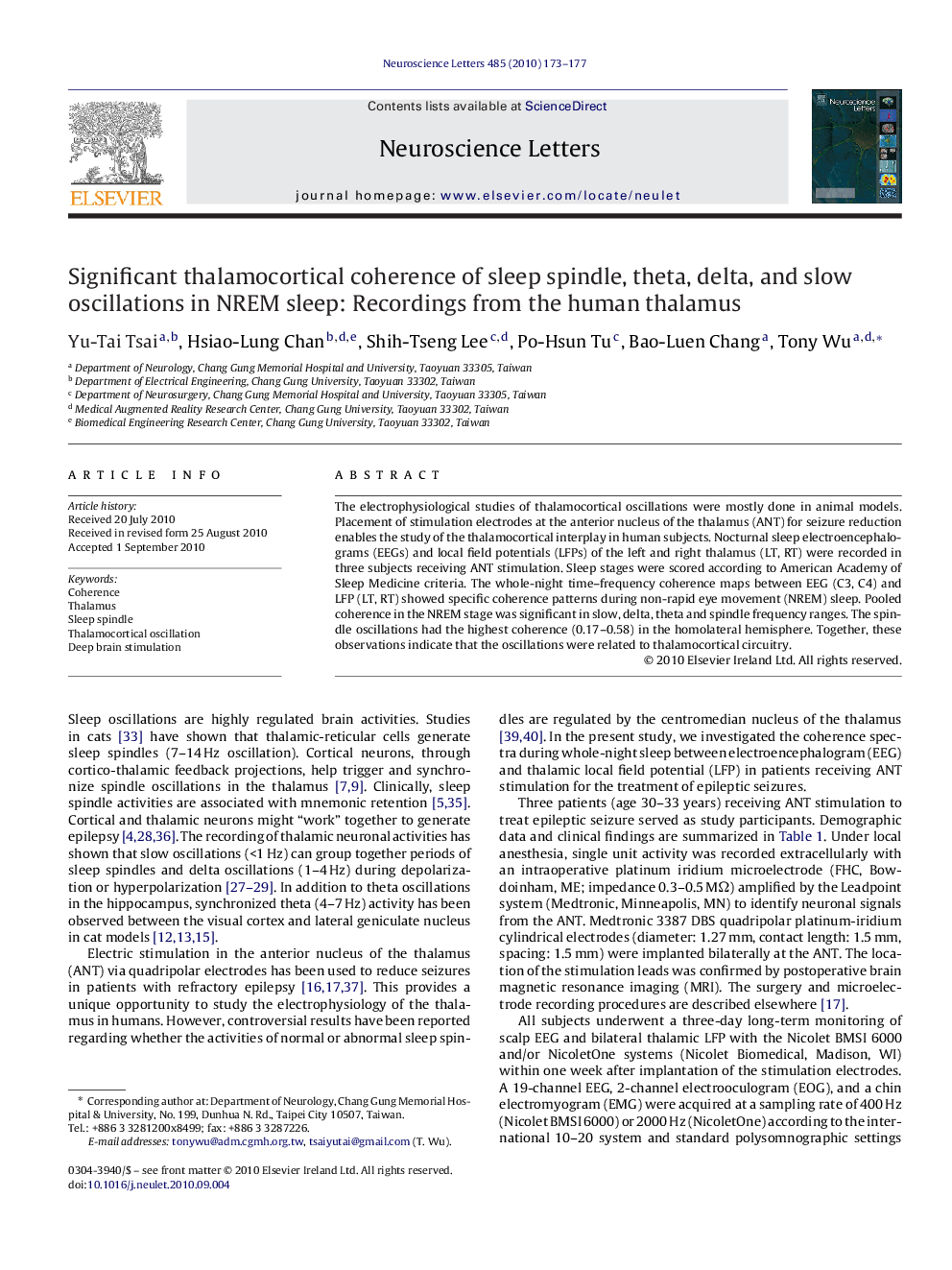| Article ID | Journal | Published Year | Pages | File Type |
|---|---|---|---|---|
| 4345647 | Neuroscience Letters | 2010 | 5 Pages |
The electrophysiological studies of thalamocortical oscillations were mostly done in animal models. Placement of stimulation electrodes at the anterior nucleus of the thalamus (ANT) for seizure reduction enables the study of the thalamocortical interplay in human subjects. Nocturnal sleep electroencephalograms (EEGs) and local field potentials (LFPs) of the left and right thalamus (LT, RT) were recorded in three subjects receiving ANT stimulation. Sleep stages were scored according to American Academy of Sleep Medicine criteria. The whole-night time–frequency coherence maps between EEG (C3, C4) and LFP (LT, RT) showed specific coherence patterns during non-rapid eye movement (NREM) sleep. Pooled coherence in the NREM stage was significant in slow, delta, theta and spindle frequency ranges. The spindle oscillations had the highest coherence (0.17–0.58) in the homolateral hemisphere. Together, these observations indicate that the oscillations were related to thalamocortical circuitry.
Research highlights▶ Thalamocortical coherence in the NREM sleep was significant in slow, delta, theta and spindle oscillations. ▶ The spindle oscillation had the highest coherence in the homolateral hemisphere, which might provide evidence that the spindle oscillation was primarily regulated by the ipsilateral hemisphere. ▶ These observations indicate that the oscillations were related to thalamocortical circuitry.
